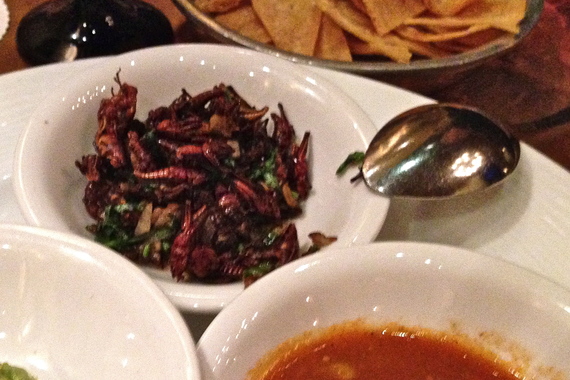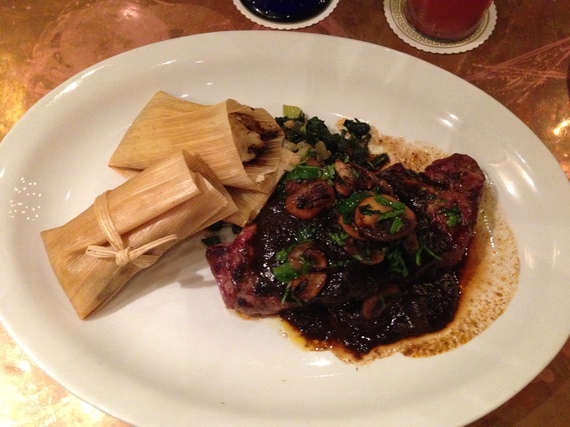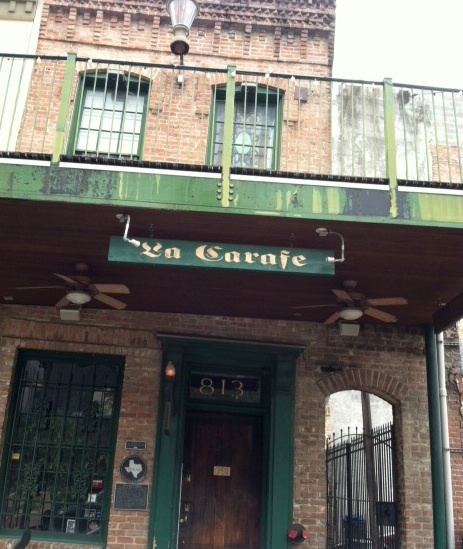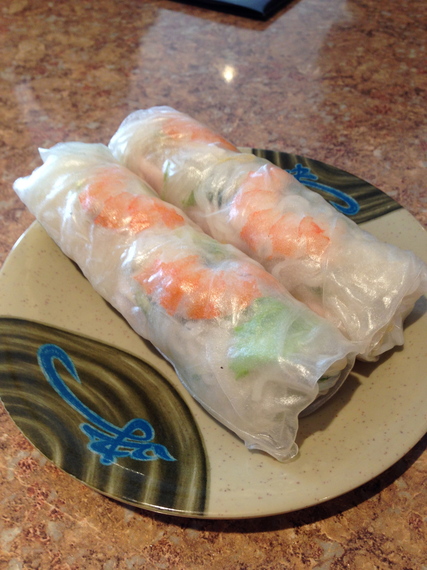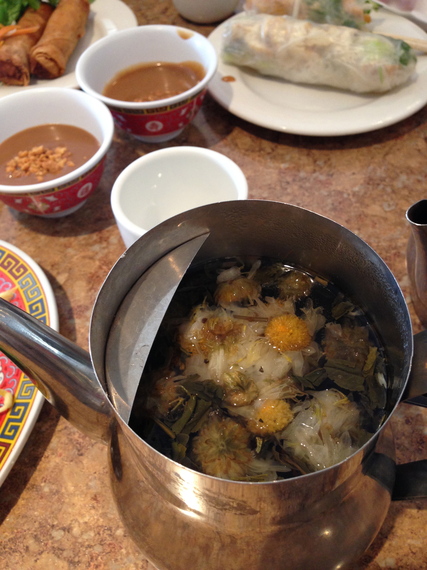I had less than two days on the ground in the Bayou City and like any good New Yorker, I immediately sought out food. No barbecue nor beans I found. Instead, my fork stumbled onto an unexpected variety of Middle Eastern, Mexican and Vietnamese dishes, each as delectably daring as the next.
As soon as I checked into the hotel, my friend and Houston local Chantelle directed me to Phoenicia, a specialty foods store with more than 15,000 products from 50 countries. Bob and Arpi Tcholakian opened a Mediterranean deli here in the 1980s off of Beltway 8. After two decades of success, they expanded to create Phoenicia Specialty Foods, a 55,000-square-foot international food market that Houstonians revere.
Inside of the massive market, MKT BAR looks like a Spartan but chic cafeteria, so I wasn't sure if it was actually a restaurant. A tiny, standalone stage with red velvet curtains and a single microphone occupied one corner. I was confused.
A friendly Texan waiter approached and I ordered up a glass of Uruguayan carrau tannat, a robust red with aromas of tobacco smoke, plum, and ripe berries. Next came ceviche with citrus-marinated scallops, shrimp, navel orange slices, red onion and fresh jalapeño, served with pita chips instead of plantain chips. It certainly wasn't bad, but an Ecuadorian or Peruvian would likely turn up her nose.
We split our main courses, which included the MKT Slider, braised pulled lamb marinated in Turkish coffee with barbecue sauce and pickled cabbage, stuffed inside a small pita puff. The other was Moroccan grilled lamb sliders with spicy shanklish cheese, Moroccan citrus olives and lebni garlic aioli in a homemade brioche roll.
All creative, not all satisfying. That said, I wish I'd have had more time to make a proper shopping trip to see all of the items at Phoenicia Specialty Foods and try my hand at a few home recipes.
A few hours later, I headed into Hugo's, a Mexican restaurant in Houston's Montrose neighborhood. The 1925 building was designed by Joseph Finger, the same art deco architect who designed Houston's City Hall. Hugo's is known for great margaritas -- and I did try a few -- and its authentic cuisine.
Its namesake is Mexico City-born Hugo Ortega, co-author of Street Food of Mexico and the restaurant's executive chef. Having come from a recent trip to Mexico City and Mérida myself, I jumped right in with a plate of chapulines -- pan sautéed grasshoppers served with guacamole, tortillas and chipotle tomatillo salsa. Crunchy, with a lime pop, they honestly were good, but my mind couldn't quiet itself knowing that these were bugs.
My first experience with huitlacoche was in a Zarela Martinez dish (mother of the modern culinary pop star Aarón Sánchez). That sold me on this otherworldly ingredient best translated as "corn smut" or corn fungus. At Hugo's, my eye was naturally drawn to the bistec a las brazas con mole de huitlacoche, grilled strip steak with huitlacoche-mulato pepper sauce, wild mushrooms and black bean tamales. It was a sturdy dish, but the tamale was the standout.
My recent experience in the Yucatán solidified the supremacy of that Mexican region's cuisine. So I also tried the Cochinita Pibil, a slow-roasted baby pig cooked in banana leaf, with pickled onions, black rice and habanero salsa. (Hugo may be from Mexico City, but he turns out a darn good Yucatecan dish.)
On the way home, we stopped by La Carafe, a mid-19th century bar and listed on the National Register for Historic Places. What looks like a New Orleans French Quarter watering hole started out humbly enough in 1847 as The Kennedy Bakery. The legend goes that Confederate soldiers could get hot biscuits there during the Civil War. The dimly lit, two-story building reeks of haunted character, giving real meaning to the phrase "if these walls could talk." After a day of gorging on Turkish-coffee-soaked lamb and corn fungus, I had just enough left in me to down one Lone Star, the "national beer of Texas."
Lunch the following day was in the Little Saigon section of Midtown. Banh Cuon Hoa is a gem of an Asian eatery, hidden in a nondescript, colorless strip mall. Before I even touch on the cuisine, let's talk about the prices. Lunch, including appetizers, beverages, tax and tip, for seven adults was $96. (In America. In 2014. With table service. Mind = Blown.)
Not surprisingly, Banh Cuon Hoa serves banh cuon, a filled rice crepe from Northern Vietnam, along with the nation's well-known pho and more obscure dishes in the West like bun mam (Vietnamese "gumbo"); cháo long (rice softened in a flavorful broth with cubes of congealed blood); bun canh (thick flour noodle); and bun rieu (meat rice vermicelli soup).
To wash it all down, we ordered up tiny pots of Vietnamese coffee -- a thick mud over sweetened condensed milk and invigorating sunflower green tea, with actual sunflowers smiling back up at you out of their shaky-hinged teapot.
That concluded my quick-fire culinary tour of Houston. I'd had a few bites of steak and one bottle of beer, but overall the food was rather unexpected, mostly bizarre and pretty dang tasty.

